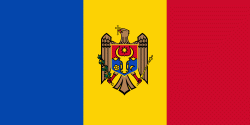Ungheni is a district (raion) in the central part of Moldova, bordering Romania, with the administrative center at Ungheni. The other major city is Corneşti. As of 1 January 2011, its population was 117,400.
Villages with ancient historical credentials are Buciumeni, Busila and Ungheni, they are documented in the period 1428–1430. About noble families who ruled the territory known as follows: the 1462 Pan Bratul, Procelnic's son, reigned here. This Procelnic was Stoian, advice nobleman in the reign of Alexander the Good, and participant in the Battle of Grunwald in 1422. Other relatives of the warrior, master settlement in 1490, until the 17th century. Beginning with the reign of Vasile Lupu, his cousin, marshal Iorga, buy here parts of estates. After his death he bequeathed to the village of his sisters Alexandra and Creata. Their life in Ungheni died in the late 18th century. In 1812 the Treaty of Bucharest, Basarabia is occupied by the Russian Empire at this time (1812–1917), has an intense russification of the native population. In 1876–1877 is built spotted Prut between Ungheni (Moldova) and common Ungheni (Romania) Eiffel Bridge, designed by Gustave Eiffel, the creator of the Eiffel Tower in Paris, Gustave Eiffel in this period, visit Ungheni. In 1918 after the collapse of the Russian Empire, Basarabia joins the motherland Romania, in this period (1918–1940, 1941–1944) is part of the Iași County. In 1940 after Molotov-Ribbentrop Treaty, Bessarabia is occupied by the USSR. In 1991 as a result of the proclamation of Independence of Moldova, part and residence of the Ungheni County (1991–2003), and in 2003 became administrative unit of Moldova.


















